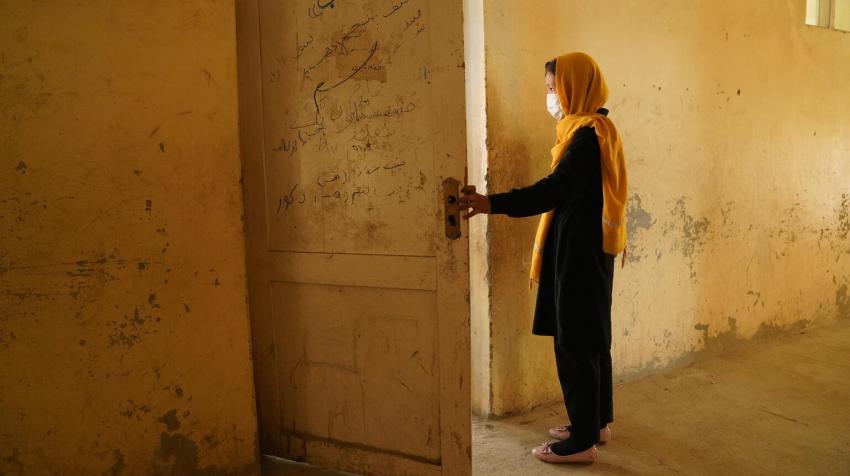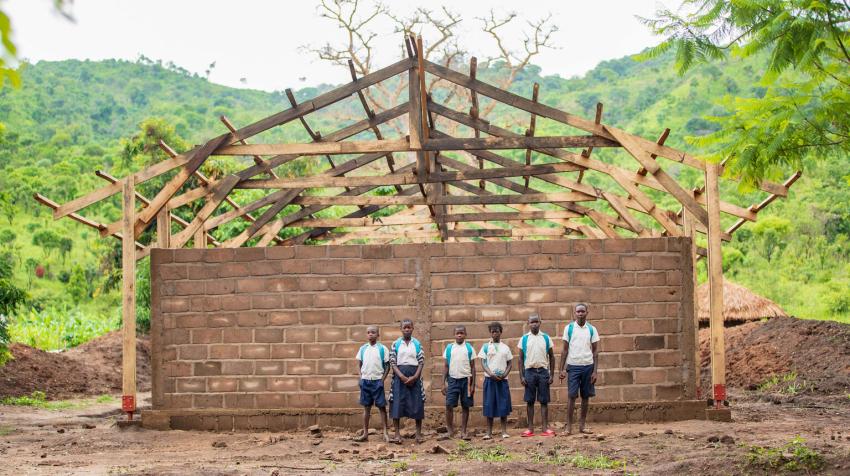GCPEA News
Let’s Recommit to Protecting Students, Educators, and Schools from Attack
UN Chronicle, September 15, 2022

About the author
Dr. Jerome Marston is a senior researcher at the Global Coalition to Protect Education from Attack (GCPEA).
In 2020 and 2021, an average of six attacks on education occurred around the world each day, as reported in Education Under Attack 2022, a publication issued by the Global Coalition to Protect Education from Attack (GCPEA). These widespread attacks caused injuries, damage and even death, and they prevented students from receiving an education.
During armed conflicts, government armed forces and non-State armed groups bomb and burn schools and universities, and kill, injure, rape, abduct, arbitrarily arrest and recruit students and educators at or near educational institutions. Armed forces and groups also use schools and universities for military purposes, including as bases, firing positions and detention centres.
Today we observe the third International Day to Protect Education from Attack. The Day brings attention to the millions of children and young people living in conflict-affected contexts, unable to access education. It also calls for the safeguarding of schools, students and educators. In 2020, Qatar and 62 co-sponsors presented United Nations General Assembly resolution 74/275 establishing this important observance.
GCPEA, the United Nations system and our partners have taken important steps to safeguard education in armed conflict, including by adopting significant United Nations resolutions and encouraging engagement with the Safe Schools Declaration, now endorsed by 114 United Nations Member States.
Yet, the International Day also serves as a reminder that we must do more. This should start at the upcoming Transforming Education Summit, to be held at United Nations Headquarters on 16, 17 and 19 September 2022, with the announcement of new commitments to protect schools and universities, and their students and staff. We should then intensify our calls for greater endorsement and implementation of the Safe Schools Declaration.
Attacks on education and military use of schools and universities
The Global Coalition identified more than 5,000 reported attacks on education and cases of military use of schools and universities in 2020 and 2021, harming more than 9,000 students and educators in over 85 countries. Globally, attacks on education and the military use of schools and universities increased in 2020 and 2021 compared with the previous two years. Two thirds of the incidents were attacks on schools, with Mali, the Democratic Republic of Congo, and Palestine most affected. The military occupation of schools and universities more than doubled. Girls and women were reportedly targeted in attacks on education because of their gender in 11 countries.
Damage to facilities from explosive weapons caused students and teachers to miss out on at least 249 hours of class between January 2019 and February 2021. These attacks and the resulting destruction translate into lost learning.
Attacks on education and the military use of schools have continued at troubling levels in 2022. As just one example, more than 2,400 educational institutions have been damaged or destroyed by bombings and shelling in Ukraine since the Russian invasion on 24 February 2022, according to the country’s Ministry of Education and Science.
Grave consequences for students
Education is fundamental, even during war. Access to learning can give children and young people the knowledge and abilities needed to contribute to their communities and economies—and the skills to resolve disputes and rebuild after conflict. Beyond teaching, schools and universities can provide a safe space, give students routine and connect them to life-saving resources such as meals and mental-health services.
Children in conflict- and crisis-affected areas are twice as likely to be out of school as those in other places. Attacks on education are a significant contributor to this deficit.
In one example, a case study conducted by GCPEA and Palestine found that about a quarter of all schools in Gaza were damaged by air- and ground-launched explosives in May 2021. Damage to facilities from explosive weapons caused students and teachers to miss out on at least 249 hours of class between January 2019 and February 2021. These attacks and the resulting destruction translate into lost learning.
After attacks, students may not have a school or university to return to. And when the educational facilities are repaired or families relocate to a new area, fear and trauma may prevent students from resuming their studies or otherwise interfere with their learning. In particular, girls and women are less likely to resume their education after an attack. Their families are more likely to keep them at home as a precautionary measure; even limited time away from education leaves women and girls vulnerable to child or forced marriage and other risks that inhibit their return.

Progress through the Safe Schools Declaration and other actions
The launch of the Safe Schools Declaration in 2015 was a crucial step towards preventing and mitigating the impact of attacks on education. The Declaration is a political commitment to protect students, educators, schools and universities during armed conflict. Governments that endorse the Declaration commit to using the Guidelines for Protecting Schools and Universities from Military Use during Armed Conflict, which provide concrete guidance to armed forces and non-State armed groups on restricting the use of schools for military purposes. The primary GCPEA recommendation for protecting education is for States to endorse the Declaration and implement the Guidelines.
Another key commitment under the Declaration is monitoring and reporting, for which GCPEA developed the Toolkit for Collecting and Analysing Data on Attacks on Education. The Toolkit provides guidance to governments, United Nations agencies, and development and humanitarian actors on gathering and analysing data to better understand, prevent and respond to attacks on education. With improved monitoring and analysis, attackers and types of attacks—such as arson, bombing, or looting—can be identified so that governments and schools can adopt prevention methods. Fine-grained data is also crucial for identifying the schools and universities in need of repair and designing catch-up classes for affected students.
The Transforming Education Summit offers an important opportunity to encourage greater protections for schools and universities during armed conflict.
The United Nations Security Council has also taken several important steps to protect education from attack. Among them is Council resolution 2601 (2021), which condemned attacks on schools, educational facilities and civilians connected with them, and urged Member States to develop measures to prevent and address attacks, including with domestic legal frameworks.
The upcoming Transforming Education Summit, which will take place on 16, 17 and 19 September 2022, is another significant step by the United Nations system. Governments will gather at the Summit to galvanize action towards achieving Sustainable Development Goal 4 on Quality Education, including by reimagining education for all students and educators and addressing the effects of the COVID-19 pandemic on learning.
Next steps: Summit commitments and increased Declaration endorsements
The Transforming Education Summit offers an important opportunity to encourage greater protections for schools and universities during armed conflict. Governments and donors should include in their Summit pledges commitments to: (a) end attacks on education and the military use of schools and universities; (b) endorse and implement the Safe Schools Declaration; and (c) prioritize and finance programmes to safeguard schools and universities during armed conflict.
To transform education, we need to protect education. The upcoming Summit can serve to remind the international community that safe schools and universities are at the heart of inclusive, equitable education systems. And that is just the next step. Moving forward, we must all intensify our calls for more endorsements of the Safe Schools Declaration and for participating countries to deepen their work to translate commitments into action.




